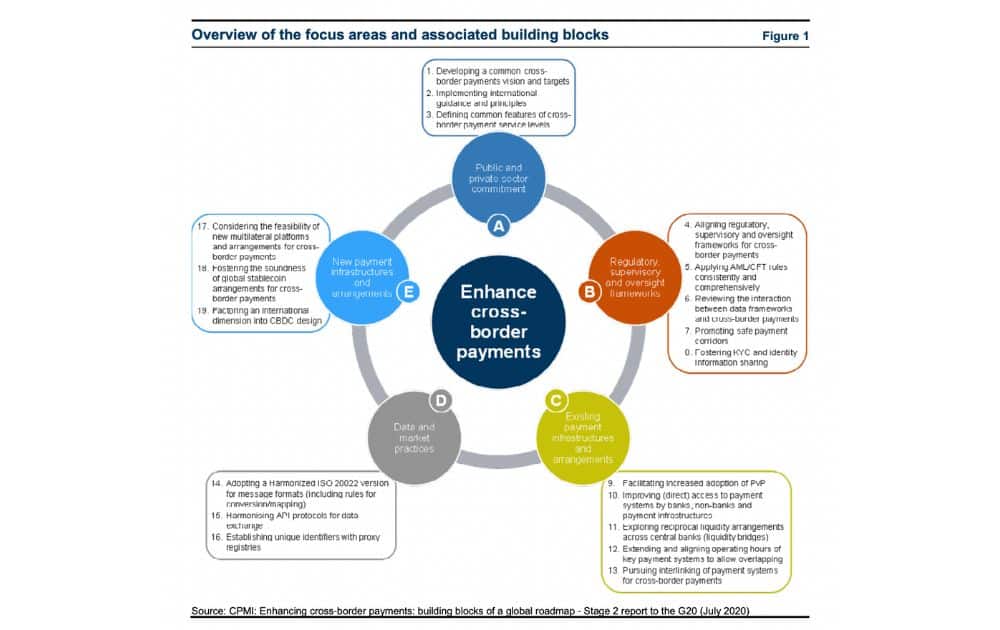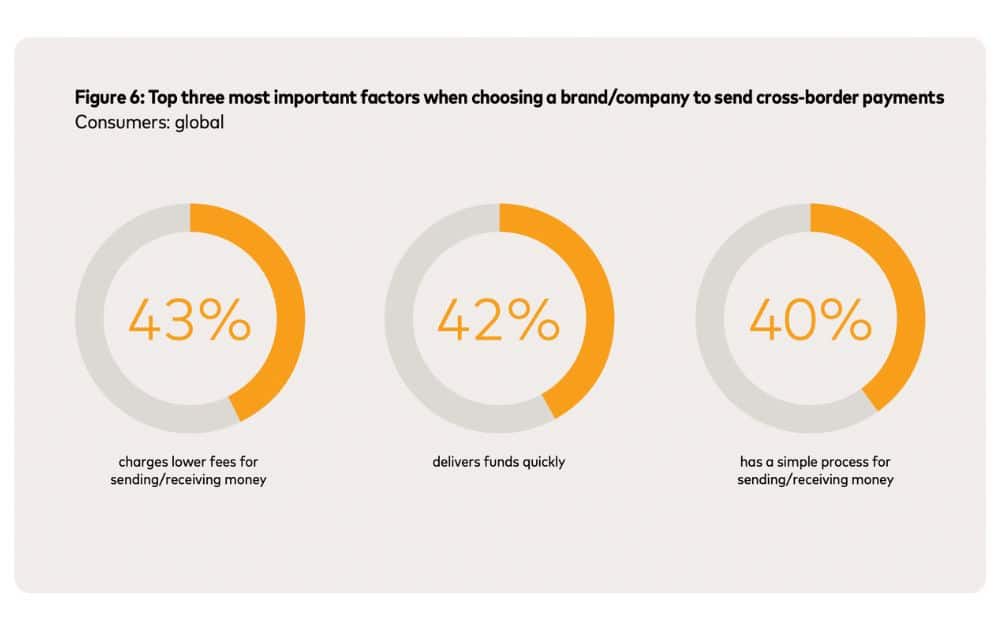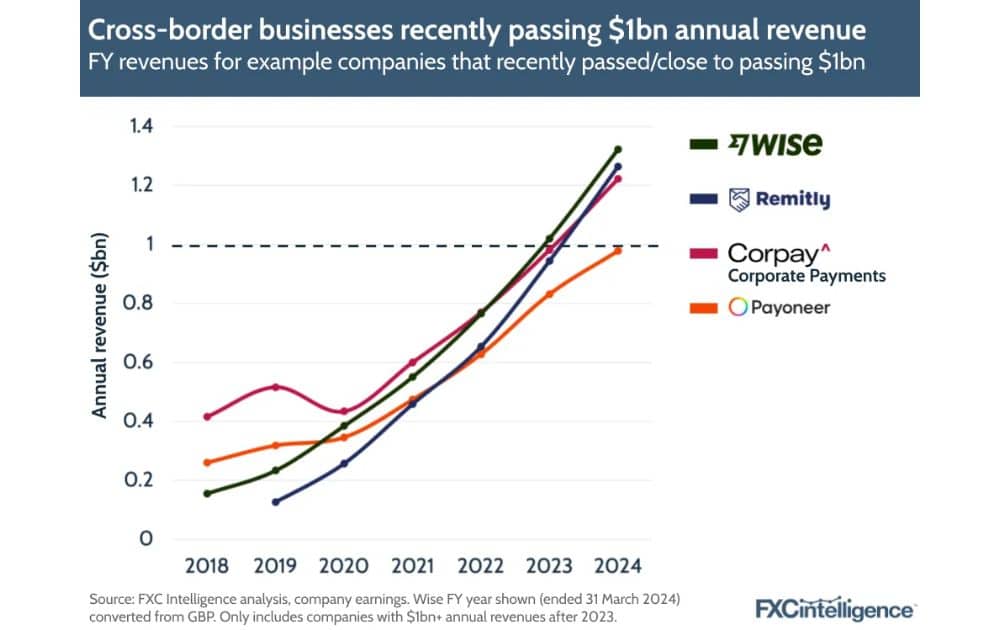Cross-border funds are the invisible engine behind your worldwide checkout button.
Behind each sale that crosses a border are a bunch of processes invisible to the vendor and shopper, together with foreign money conversions, regulatory points, and financial institution approvals.
As international commerce intensifies, the marketplace for these transactions is scaling quick. The worldwide cross-border funds market is estimated to be price $198.6 billion in 2024. It’s anticipated to greater than double by 2034, reaching roughly $413.1 billion, pushed by a constant compound annual progress fee (CAGR) of seven.6%.

Let’s peel again the layers of cross-border funds and break down the important parts that make worldwide transactions work easily.
What are Cross-Border Funds?
Cross border funds are monetary transactions that happen between events based mostly in separate international locations, that means the sender and recipient function beneath completely different nationwide monetary techniques. Listed here are just a few examples:
- A buyer in Germany shopping for a smartwatch from Amazon Japan; the transaction includes foreign money conversion from euros to yen.
- A contract graphic designer within the Philippines getting paid in USD by a shopper in Canada through PayPal or Smart.
- A U.S.-based ecommerce model sourcing eco-friendly packaging from a provider in Vietnam, paying by a B2B cross-border financial institution switch.
So, what’s a cross border transaction? In easy phrases, it’s a cost that crosses nationwide boundaries, triggering a sequence of processes that usually contain:
- Foreign money conversion
- Regulatory checks
- Settlement by varied banks and cost networks
For Amazon worldwide sellers, cross-border funds are a core a part of operations. Sellers must obtain funds of their native financial institution accounts, even when their prospects store from completely different components of the world.
That is the place challenges like a heavy cross-border cost charge come into play. These fees—typically labeled as a cross-border charge—are utilized by banks, card networks, or cost processors for dealing with transactions throughout jurisdictions.
It goes with out saying that cross-border transactions are essential in at present’s international market. In actual fact, the Monetary Stability Board (FSB) and the Committee on Funds and Market Infrastructures (CPMI) proposed a worldwide roadmap to enhance these funds.
Initiated in 2020 and designed as a multi-year initiative working by 2027, the FSB and CPMI’s cross-border funds roadmap is guided by 5 key focus areas:
- Public and Personal Sector Dedication
- Regulatory, Supervisory, and Oversight Frameworks
- Present Fee Infrastructures
- Knowledge and Market Practices
- New Infrastructures and Preparations

The roadmap goals to resolve cross-border funds points, together with excessive prices, gradual supply, unpredictable charges, and restricted transparency.
Cross-Border Funds vs Home Funds
Cross-border funds differ from home funds in a number of key methods, primarily because of the added layers of complexity concerned when cash strikes between international locations.
Whereas home transactions sometimes happen throughout the similar banking system, foreign money, and regulatory surroundings, cross-border funds should navigate the next elements:
- A number of monetary establishments
- Totally different currencies
- Time zones
- Jurisdiction-specific compliance necessities
These transactions typically contain foreign money conversion, incur overseas alternate charges, and take longer to settle as a result of middleman banks and anti-fraud checks.
Moreover, cross-border funds are extra susceptible to failures or delays, making optimization important for companies engaged in worldwide funds.
Key Elements of Cross-Border Transactions
Listed here are the core elements that energy seamless cross-border funds for at present’s companies and customers:
Fee Gateways and World Processing Infrastructure
A cost gateway acts because the bridge between the shopper’s cost methodology and the service provider’s financial institution.
For ecommerce funds particularly, choosing the proper gateway could make or break your cross-border technique. To cut back the friction of promoting overseas, main international cost processing suppliers supply options like:
- Fraud safety
- Foreign money dealing with
- Multi-country settlement
Fee Localization
To spice up conversions, companies should tailor the checkout expertise to every market. Fee localization includes:
- Displaying costs in native currencies
- Providing region-preferred cost strategies
- Utilizing native language interfaces
Foreign money Conversion and International Change Charges
When a purchaser pays in a special foreign money than the vendor’s, the quantity have to be transformed. That is the place overseas alternate charges come into play, sometimes charged by banks, card networks, or cost gateways. The quantity charged can fluctuate based mostly on a number of elements, similar to:
- The area
- Fee methodology
- Service supplier
For ecommerce companies, minimizing these charges could make a giant distinction in general profitability. In spite of everything, customers are fee-conscious. Mastercard’s Borderless Funds Report 2023 reveals that 43% of world customers say that decrease charges for sending and receiving cash are crucial issue when selecting a model or platform for cross-border funds.

Compliance, Threat, and Settlement Processes
Cross-border transactions should adhere to a number of regional laws. These laws embody the next requirements:
- Anti-money laundering (AML)
- Know your buyer (KYC)
- Knowledge safety practices
Suppliers of cross border cost options typically deal with a lot of this compliance work.
Market Enlargement Instruments
Firms going international depend on tech platforms that assist market growth by options like:
- Multicurrency pricing
- Tax calculation engines
- Built-in logistics
The extra environment friendly your worldwide cost setup, the smoother your buyer expertise.
Prime Platforms for Managing Cross-Border Funds
Listed here are a few of the hottest cross-border funds platforms utilized by ecommerce ventures across the globe:
Stripe
Stripe is a go-to resolution for international ecommerce manufacturers, providing seamless worldwide funds, multicurrency assist, and cost localization instruments. With Stripe Checkout and Join, sellers can attain consumers in over 135 international locations.
- Greatest for. Startups and on-line manufacturers needing developer-friendly customization.
PayPal
PayPal is without doubt one of the most trusted platforms for cross-border funds, notably amongst small companies. It helps transactions in over 100 currencies and is broadly utilized by worldwide prospects around the globe. Sellers may also entry working capital and dispute decision options.
- Greatest for. Ecommerce shops concentrating on a broad, worldwide buyer base.
Smart
Smart presents clear foreign money conversion and real-time alternate charges, serving to sellers decrease their cross-border cost charges. It’s common for B2C and freelancer payouts, with a multi-currency enterprise account for international operations.
- Greatest for. Small companies trying to scale back hidden FX fees
BlueSnap
BlueSnap is constructed for international cost processing, providing options like sensible routing, fraud prevention, and assist for over 100 cost varieties. It additionally permits for embedded funds through API and checkout customization.
- Greatest for. Mid-sized companies and rising ecommerce manufacturers
Payoneer
Favored by Amazon worldwide sellers and international freelancers, Payoneer permits cross-border fund transfers, digital accounts in a number of currencies, and direct withdrawals to native banks.
- Greatest for. Market sellers, distant groups, and suppliers needing versatile withdrawal choices
The FXC Intelligence reported over 30 firms projected to earn $1 billion or extra in cross-border funds income in 2024, together with ecommerce-friendly platforms like Payoneer and Smart.

In the meantime, Remitly and Corpay, sometimes used for remittances and B2B treasury and payroll options, respectively, had been additionally among the many fastest-growing firms inside cross-border cost options.
Methods to Optimize Your Cross-Border Funds
Listed here are key methods that sort out compliance, tax and different monetary implications of promoting internationally, particularly for cross-border ecommerce manufacturers and Amazon World Promoting contributors:
Streamline Tax Registration and VAT Compliance
Promoting internationally means navigating an online of tax obligations, from VAT quantity within the EU to GST (Items and Providers Tax) in Australia.
In case you’re a part of Amazon World Promoting, some areas require a legitimate VAT quantity―just like the UK―to listing merchandise or keep away from account suspension. Not registering correctly can result in sudden charges, fines, or blocked payouts.
Proactively analysis your tax obligations in every goal nation. Use Amazon’s VAT Providers (or a third-party tax platform) to automate filings and keep compliant.
- Actionable Tip. In case you’re not sure the place to begin, seek the advice of AMZ Advisers to get knowledgeable steering in your ecommerce enterprise, together with VAT registration to assist scale back promoting charges associated to non-compliance.
Consider World Promoting Charges and Foreign money Change Prices
Amazon applies varied charges to worldwide sellers, together with Amazon World Promoting referral charges, achievement prices, and alternate fee charges when changing earnings. Many sellers overlook these of their pricing technique.
Use Amazon’s FBA income calculator to estimate whole prices throughout areas. Construct these charges and potential cross-border funds fees into your pricing fashions to guard margins.
- Actionable Tip. Think about using Amazon’s native financial institution disbursement choice (the place out there) to keep away from unfavorable FX conversions and third-party banking charges.
Keep Forward of Compliance and Regulatory Shifts
Cross-border transactions should adjust to native monetary legal guidelines, particularly round anti-money laundering, know your buyer guidelines, and transaction limits. Not complying correctly can result in frozen funds, chargebacks, and even blacklisting.
Work with a cost service supplier or gateway that displays regulatory updates and automates these processes throughout buyer onboarding.
- Actionable Tip. Audit your cost flows yearly and guarantee your service supplier complies with the most recent laws in each area you promote to.
Closing Ideas
Cross-border funds could occur within the background, however they carry front-line penalties for ecommerce companies aiming to scale globally.
Whether or not you’re promoting on Amazon or managing your personal ecommerce web site, success comes right down to choosing the proper companions, staying forward of laws, and constructing monetary methods that defend your backside line.
Creator
 Carla Bauto Deña is a journalist and content material author producing tales for conventional and digital media. She believes in empowering small companies with the assistance of progressive options, similar to ecommerce, digital advertising and marketing, and information analytics.
Carla Bauto Deña is a journalist and content material author producing tales for conventional and digital media. She believes in empowering small companies with the assistance of progressive options, similar to ecommerce, digital advertising and marketing, and information analytics.

